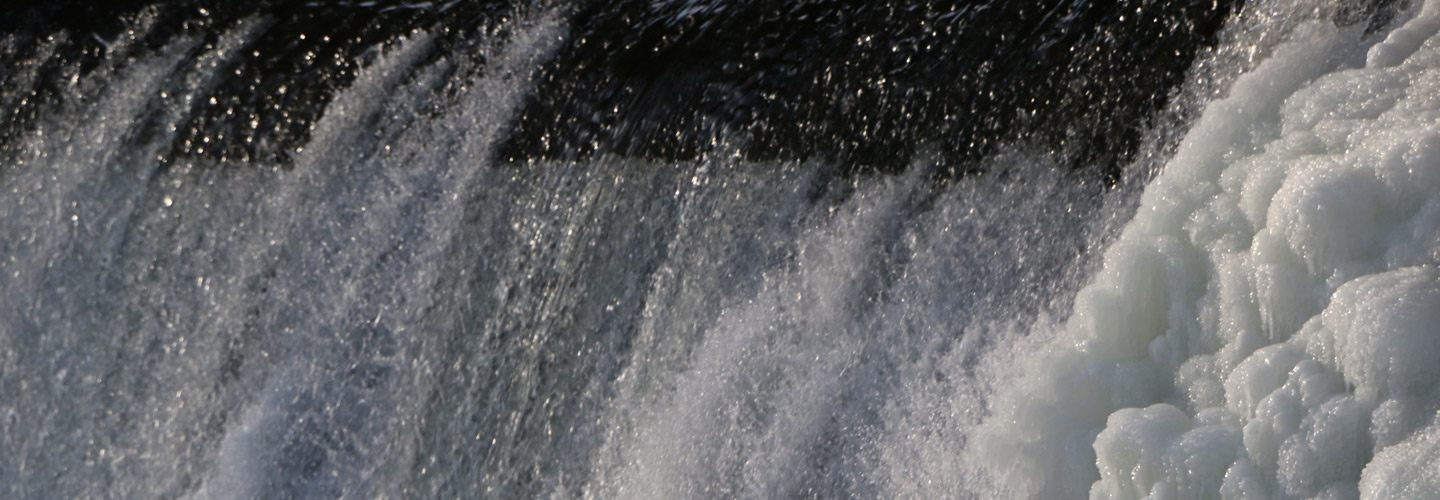The original renewable energy source, still going strong
Hydro plants provide colorful history and clean energy for tomorrow

This was written and researched by Judd Martinson, a 2019 intern at Xcel Energy.
Xcel Energy is on the lookout for innovative energy technology ideas to help meet the bold goal of delivering 100 percent carbon-free electricity by 2050. Yet even an old idea like hydroelectric power still has an impact on energy production today.
About eight percent of power sent out to the company’s nearly 1.7 million electric customers in the Upper Midwest comes from hydro plants – many of which reside in Wisconsin. And in Colorado, a unique hydro approach delivers clean peak energy supply as needed on-demand.
Unlike some renewable technology, hydro plants continuously produce baseload power. They stay on throughout the winter. Even when river waters appear to be freezing over, a current still runs through beneath the surface.
How does hydro-electric power work?
A hydro plant’s work begins by backing up a river’s flow with a dam to increase the fall of water through tubes toward turbine blades. The water then turns the blades, which spin generators to make electricity.
The electricity is then transformed into the correct voltage for distribution lines to carry out power. Before the electricity reaches homes and businesses, the voltage is converted again for consumer use.
Dating back to the early 1900s, predecessor companies of what would become Xcel Energy began building hydro-electric plants on eight different Wisconsin rivers. The company now runs 19 hydro-electric plants in Wisconsin, as well as six plants in Colorado and one in Minnesota. Learn more.
Xcel Energy’s hydro plants brim with history.

Wissota Hydro, Wisconsin
This plant required the Wisconsin-Minnesota Light and Power Company to create a small city to house 700 workers during construction of the first hydro plant in Wisconsin. The project included building railroads off the mainline, bridges, a school, pharmacy, and hospital. A dining hall large enough for 350 people to eat at a time functioned with one waiter for every 12 persons.
The crew completed the $5 million plant in 1918 and created the 6,212-acre Lake Wissota after flooding the construction area.
In the movie Titanic, Jack Dawson, the character played by Leonardo DiCaprio, says he went ice fishing on Lake Wissota. However, the Titanic sank three years before the dam construction began, which later formed the lake. Still running today, the Wissota Hydro plant produces up to 40 megawatts of power, as well as daily peaking power.
Dells Hydro, Wisconsin
Works down the Lower Chippewa River system from the Wissota plant and is the smallest of six hydro plants on the river. Dells Hydro produces about 12 megawatts of power.
While the Dells Dam was built during the logging boom in 1878, the dam only began producing energy when the City of Eau Claire constructed an electric generator on the dam in 1882. Eau Claire built a new dam 100 feet downstream from the first Dells Dam, which Xcel Energy bought in 2003. The company boosted the dam to its current production capabilities with upgrades to the generating units in 2009.
St. Croix Falls Hydro, Wisconsin
One of Xcel Energy’s oldest hydro plants also remains the company’s single dam on the St. Croix River. Completed in 1905, the project aimed to supply more power to the Twin Cities. A few hundred men worked 24/7 seven days a week for two years, breaking windows and shaking buildings in nearby towns with blasts.
Cabin Creek, Colorado
The highest-elevation generating station in the Xcel Energy fleet is the Cabin Creek hydro plant, located 10,000 feet above sea level in the Rocky Mountains 45 miles west of Denver. This innovative pumped-water storage facility has been in commercial operations since 1967, and work is now underway at Cabin Creek to extend its life for another 40 years.
Cabin Creek can respond to increases in customer demand more quickly than any other plant in the Colorado system. Drawing from a steady and rich energy-producing history, hydroelectric power still plays a role in helping Xcel Energy reach a carbon-free future by 2050.
Learn more about how Xcel Energy is delivering a clean energy future for you.


